Direction (1 – 5) : Given below data shows total number of vehicles (Petrol, Diesel & CNG) manufactured by four companies. Read the data carefully and answer the questions.

Q2. Find the ratio of CNG vehicles manufactured by C & D together to Petrol vehicles manufactured by A & B together?
(a) 127 : 100
(b) 139 : 100
(c) 109 : 100
(d) 119 : 100
(e) 129 : 100
Q3. Average of Diesel vehicles manufactured by B, C & E is 400 and total vehicle manufactured by E are 1040. If ratio of Diesel vehicles to CNG vehicles manufactured by E is 9 : 5, then find Petrol vehicles manufactured by E?
(a) 480
(b) 440
(c) 420
(d) 360
(e) 520

Q5. Find average of Petrol vehicles manufactured by B, C & D?
(a) 232
(b) 242
(c) 252
(d) 272
(e) 264
Direction (6 – 10): Bar graph given below shows two successive discounts allowed on four different articles. Read the data carefully and answer the questions.

Q6. If ratio of marked price of P to that of Q is 5 : 6 and difference between selling price of both articles is Rs. 450, then find difference between marked price of article P & Q?
(a) 360 Rs.
(b) 500 Rs.
(c) 440 Rs.
(d) 400 Rs.
(e) 480 Rs.
Q7. Marked price of S is 25% less than that of P and sum of selling price of both articles is Rs. 2520 and loss on S is 10% & profit on P is 20%. Find ratio of cost price of S to that of P ?
(a) 1 : 1
(b) 1 : 2
(c) 1 : 3
(d) 2 : 3
(e) 2 : 5
Q8. If ratio of selling price of Q to that of S is 7 : 4, then find ratio of marked price of S to that of Q?
(a) 6 : 5
(b) 7 : 5
(c) 5 : 7
(d) 5 : 8
(e) 9 : 5
Q9. If second discount allowed on P is increased by 25%, then the selling price of article will be decreased by Rs. 90 and selling price of R is Rs. 110 less than that of P, then find marked price of article R?
(a) 1600 Rs.
(b) 1200 Rs.
(c) 1800 Rs.
(d) 2000 Rs.
(e) 2400 Rs.
Q10. Ratio of selling price of P to that of S is 4 : 3 and sum of marked price of both articles is Rs. 7000. Find difference between selling price of both articles?
(a) 640 Rs.
(b) 840 Rs.
(c) 720 Rs.
(d) 480 Rs.
(e) 240 Rs.
Solutions


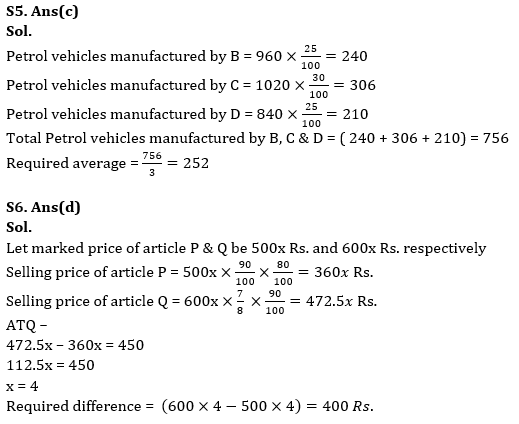
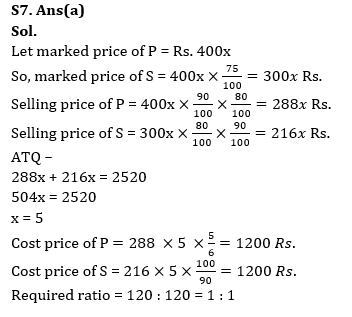
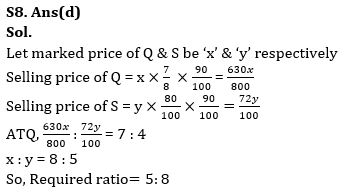
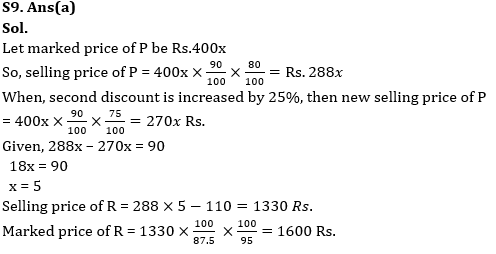
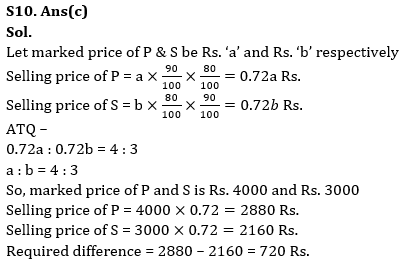





 Quantitative Aptitude Quiz For Bank Main...
Quantitative Aptitude Quiz For Bank Main...
 Quantitative Aptitude Quiz For Bank Foun...
Quantitative Aptitude Quiz For Bank Foun...





